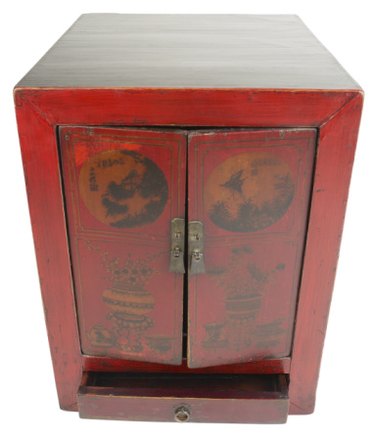Things You'll Need
Masking tape
Kraft painter’s paper
Lacquer thinner
Paint brush
0000 steel wool
Paste wax
Rags
Spray lacquer

Standing next to shellac as the easiest wood finish to repair is lacquer. Its properties allow it to be softened by the reintroduction of a solvent, and, as the solvent evaporates, the lacquer hardens to a new finish on the work piece. Repairs such as water rings, hazing due to moisture and scratches and scuffs in the lacquer may be repaired through this process. If the damage has affected more than the finish, going through to the actual wood, you will need to strip the lacquer to repair the wood surface before applying a new finish.
Step 1
Mask off the repair area so that the solvent does not affect other areas of the piece. You may use masking tape and heavy paper for this task.
Video of the Day
Step 2
Brush lacquer thinner onto the work area with a paint brush. Use long strokes in a single direction, rather than a back and forth motion.
Step 3
Allow the thinner to sit on the surface for a few minutes until it has softened the old lacquer. If the finish has been damaged by water, the whitish marks will begin to release once the lacquer softens. If water marks remain after the thinner has dried, you may repeat step two and three again until you are satisfied with the results. Scratches in the finish are also worked out through the softening and re-hardening of the lacquer.
Step 4
Allow the repaired lacquer to dry for 24 hours.
Step 5
Rub the work area with number 0000 steel wool. If the finish is satisfactory, apply a coat of paste wax, and the repaired area will disappear into the rest of the finish. If it needs a little touch-up, apply a spray lacquer over the area in light coats. Allow it to dry thoroughly per the manufacturer's specifications and apply a coat of paste wax.
Video of the Day